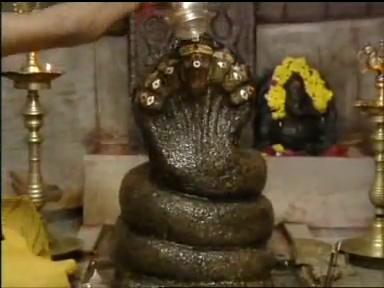Hansasana (swan pose) |  |
 | |  |
 | Hansa - swan
In this asana, the entire body is in a straight line, at an angle to the ground, with only the toes and hands touching the ground. The final posture looks like the form of a swan, hence the name.
|  |
 | Taking the asana positionInitial Position - Sitting Position
| 1. | Bend the legs one after the other and come onto the feet in a squat. |
| 2. | Rest the knees to the ground. |
| 3. | Spread the knees apart and place the hands on the ground about 3 to 4 inches apart, with the fingers pointing towards the feet. Bend and touch the elbows together and lean the upper body forward so that the abdomen (near the navel) is resting on the elbows and the chest is resting on the upper arms. |
| |
|
| 4. | Stretch the legs backward until they are straight. The feet should be together, with only the tips of the toes touching the ground. |
|
| 5. | Roll the shoulders back and raise the head slightly so that the head, neck, shoulders, back and legs form a straight line at an angle to the ground. Breathe normally. |
|
|  |
 | The asana positionIn this position, the entire body is kept in a straight line, with most of the weight on the elbows that are pressing onto the abdomen. The wrists are kept about 3 to 4 inches apart, which helps in balancing the body. The feet should be kept together, with only the tips of the toes touching the ground.
|  |
 | Releasing the asana position
| 1. | Hunch the upper body slightly by bending the neck and the shoulders forward. |
| 2. | Slowly step the feet one after the other forward. Straighten the arms and come into a squat. |
| 3. | Place the arms by the side of the body, straighten out the legs and come back into the sitting position. |
|  |
 | Anatomical focusThe compression on the abdominal organs and glands.
|  |
 | AwarenessOn the massage on the abdomen with every breath.
|  |
 | Do's
| 1. | Keep the body in a straight line. |
| 2. | Roll the shoulders back. |
| 3. | Gaze forward at a fixed point. |
| 4. | Lean forward sufficiently so that most of the body weight is on the elbows and wrists. |
|  |
 | Dont's
| 1. | Overstrain the elbows or wrists. If the weight is too much to bear, release the posture slowly. |
|  |
 | Benefits
| 1. | Massages and stimulates the abdominal organs and muscles. |
| 2. | Stimulates the appetite. |
| 3. | Helps to expel stomach and intestinal worms. |
|  |
 | Therapeutic application
| 1. | Constipation |
| 2. | Flatulence |
| 3. | Sluggishness of the liver and kidneys |
|  |
 | Precautions & contra-indications
| 1. | Peptic or duodenal ulcers |
| 2. | Colitis |
| 3. | Hyperacidity |
| 4. | Hernia |
| 5. | High blood pressure |
| 6. | Pregnancy & menstruation |
|  |
 | Duration10 to 15 seconds in order to reap the benefits of the asana. With practice, the asana can be held for up to 1 minute.
|  |
 | Variations & tipsA cushion or pillow may be placed under the face to prevent injury in case you lose balance. Beginners may also place the head on the ground for support while moving into or out of the asana.
Advanced practitioners should focus on increasingly shifting more weight onto the elbows and wrists by leaning the body forward while still keeping the body straight, in order to prepare for the more advanced asana of Mayurasana.
|  |
 | Preparatory poses |  |
 | Follow-up poses |  |
 | Ancient texts |  |
 | |


కామెంట్లు లేవు:
కామెంట్ను పోస్ట్ చేయండి